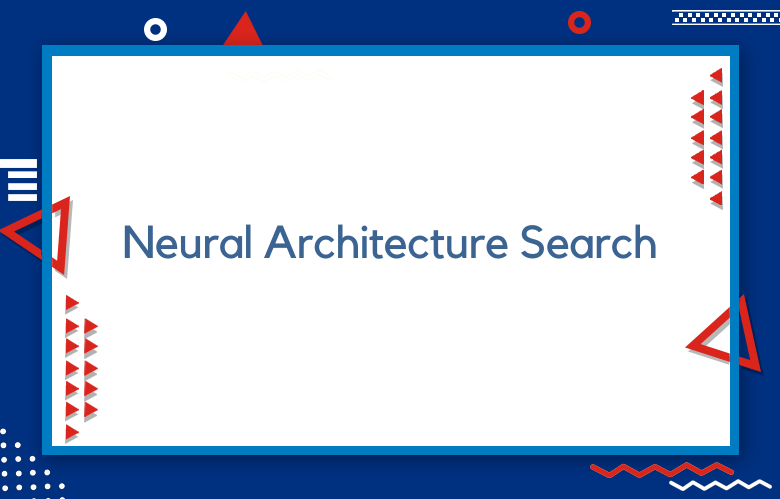NAS for Marketing: Optimizing Neural Architecture Search

- Key Takeaways
- Understanding Neural Architecture Search
- Defining the Search Space
- Generating and Evaluating Models
- Ensuring Code Adaptability
- Interpreting NAS Results
- Practical Applications in Marketing
- Optimizing for SEO Keywords
- Communicating Insights Effectively
- Final Remarks
- Frequently Asked Questions
- What is Neural Architecture Search (NAS)?
- How does NAS benefit marketing strategies?
- What is the search space in NAS?
- How are models generated and evaluated in NAS?
- Why is code adaptability important in NAS?
- How can NAS results be interpreted effectively?
- What practical applications does NAS have in marketing?
Neural architecture search (NAS) for marketing is changing the game with numerous candidate architectures, possible model architectures, and whole architectures. Traditional methods often fall short of keeping up with fast-paced trends. NAS uses AI for efficient neural architecture search to find the best neural network architectures for your marketing strategies, saving time and boosting results. It analyzes data faster than any human can, optimizing campaigns like never before.
While many marketers rely on guesswork, NAS takes a data-driven approach. This means better targeting and higher conversions. Automating model selection allows marketers to focus on creativity and strategy. The future of marketing is here, and NAS powers it. Embrace this tech to stay ahead of the competition.
Key Takeaways
- Neural Architecture Search (NAS) can enhance marketing strategies by automating model selection, allowing marketers to focus on creative aspects.
- Define your search space carefully to ensure that the models generated are relevant to your marketing goals and objectives.
- Evaluate the models NAS generates regularly to find the best fit for your campaigns, using metrics that matter to your audience.
- Ensure that the code used in NAS is adaptable so you can quickly implement changes based on new marketing trends or data insights.
- Utilize NAS to optimize SEO keywords. It can identify more opportunities that manual methods might miss.
Understanding Neural Architecture Search
Definition of NAS
Neural Architecture Search (NAS) is an automated method for discovering superior neural network architectures. It enhances the machine learning model performance by finding the best configurations. Traditional approaches often rely on human intuition, which can be limited. NAS uses algorithms to explore a wide range of possible designs.
Role of Algorithms
Algorithms are crucial in navigating neural networks’ complex design space. They quickly evaluate various neural architecture configurations, testing many designs to find optimal architectures. For example, differentiable architecture search models allow gradients to guide the search process, leading to more efficient neural architecture searches than manual ones.
Advantages Of Human Intuition
The advantage of NAS over human intuition is significant. Humans may overlook promising designs due to biases or limited knowledge. NAS can explore diverse model architectures without these limitations. It systematically tests thousands of combinations in a shorter time frame. This results in discovering innovative solutions that humans might miss.
Efficient Search Techniques
Efficient neural architecture search techniques are essential for practical applications. These techniques reduce the computational cost involved in searching through the architecture space. For instance, graph architecture search focuses on structuring networks as graphs. This allows for better representation and exploration of potential designs.
Customization and Flexibility
Another benefit of NAS is neural architecture customization. Users can tailor models to specific tasks or datasets. This flexibility enables companies to create more effective marketing strategies based on data insights. The ability to adapt architectures ensures that models remain relevant as new data emerges.
Invariant Architecture Search Mechanism
The invariant architecture search mechanism helps maintain performance across different tasks. It identifies features that remain consistent regardless of data variations. This adaptability makes it easier to apply learned architectures in various marketing scenarios.
Paper on Neural Architecture Search
Recent papers on neural architecture search highlight its growing importance in machine learning. Researchers are continuously improving methods for better efficiency and effectiveness, contributing to the development of robust neural network designs.
Defining the Search Space
Components
The search space includes various components that affect how neural architectures are formed. Key elements consist of layer types, such as recurrent, convolutional, and fully connected layers. Each layer type serves a different purpose in processing data.
Hyperparameters, including learning rates, batch sizes, and activation functions, also play a crucial role. The choice of these hyperparameters can significantly influence the model’s performance. A well-structured search space allows for a thorough exploration of these options.
Designing a sophisticated search space is essential. It ensures that the search process can discover high-performing architectures. If the search space is too limited, it may overlook practical configurations. This limitation can lead to suboptimal models.
Importance of Definition
A well-defined search space is vital for generating effective neural architectures. It guides the search algorithm in identifying promising candidates. Without clear boundaries, the search becomes chaotic and inefficient.
Defining the search space helps focus on relevant architectures. This focus increases the chances of finding models that perform well on specific tasks. Researchers have found that a structured approach leads to better results.
For example, in 2018, researchers demonstrated that a carefully defined search space led to state-of-the-art results in image classification tasks. They achieved this by selecting appropriate layer types and hyperparameters tailored to their goals.
Evolution Based on Performance
The search space can evolve based on initial architecture performance evaluations. Early results provide insights into which configurations work best. By analyzing these outcomes, researchers can refine the search space.
This refinement process often involves removing poorly performing architectures or adjusting hyperparameters, making the search more efficient over time. The algorithm focuses on areas that show promise while avoiding less effective paths.
For instance, if an initial model performs strongly with specific layer types, future searches can prioritize those layers. This iterative approach enhances the overall effectiveness of neural architecture search.
Defining the search space is crucial in neural architecture search for marketing applications. It consists of various components, such as layer types and hyperparameters. A well-defined space increases efficiency and effectiveness in discovering high-performing models. Evolving the search space based on performance evaluations leads to continuous improvement in architecture design.
Generating and Evaluating Models
Iterative Process
Generating architectures involves an iterative process. First, a model design is created based on specific criteria. This design undergoes training using available data. After training, the model’s performance is assessed through various metrics. These metrics provide insights into how well the model performs its task.
The evaluation phase is crucial. It determines if the model meets the desired standards. If results are unsatisfactory, adjustments are made to the architecture. This cycle continues until an optimal model is achieved. Each iteration refines the designs further.
Learning from Outcomes
Neural architecture search (NAS) learns from previous models. As new models are generated, their outcomes inform future designs. For instance, if a design shows promise, NAS may build upon that structure. Conversely, poorly performing models lead to changes in approach.
This method of learning ensures continuous improvement. Each generation incorporates lessons learned from past failures and successes, leading to more effective deep learning models over time.
Importance of Performance Metrics
Performance metrics guide the search for optimal architectures. These metrics measure accuracy, speed, and efficiency, among other factors. They help determine which designs work best under specific conditions.
For example, precision measures how many correct predictions a model makes out of all predictions. Recall assesses how many actual positives the model identified. Balancing these metrics is essential for achieving high performance.
In marketing, effective models can accurately predict customer behavior. Accurate predictions allow for better targeting and increased sales. Therefore, selecting the right performance metrics is critical in guiding NAS.
Computational Power
Computational power plays a significant role in generating and evaluating models. Effective NAS requires substantial resources to train multiple architectures simultaneously. High-performance machines can evaluate thousands of designs quickly.
Access to powerful hardware allows researchers to explore vast search spaces efficiently. As technology advances, the ability to conduct extensive searches improves, leading to better machine-learning solutions tailored to marketing needs.
Ensuring Code Adaptability
Flexible Coding Practices
Flexible coding practices are crucial for adapting to various Neural Architecture Search (NAS) frameworks. Each framework has unique requirements, and developers must ensure their code can easily adjust to these needs. This adaptability allows teams to explore different architectures without extensive rewrites.
Code adaptability also helps in maintaining efficiency. Efficient architectures often require quick changes based on feedback from evaluations. When the code is adaptable, it can respond to these changes swiftly. This flexibility ultimately leads to better performance in marketing tasks.
Modular Code Structures
Adopting modular code structures is another effective strategy. Modular designs break down the code into smaller, manageable pieces. Each module handles specific tasks within the NAS process. This organization makes updating or modifying parts of the code easier without affecting the entire system.
For instance, if a new algorithm improves model performance, developers can simply update that module. They do not need to overhaul the whole architecture. This approach saves time and resources, allowing teams to focus on enhancing their models rather than fixing code issues.
Leveraging Libraries and Tools
Leveraging existing libraries and tools can significantly boost implementation efficiency. Many libraries support NAS and provide pre-built functions that simplify coding efforts. For example, TensorFlow and PyTorch offer tools for quickly building efficient architectures.
These tools reduce developers’ workloads and provide ready-made solutions for common tasks within NAS projects. Utilizing these resources allows teams to focus on exploring their marketing strategies more deeply rather than getting bogged down with complex coding challenges.
Key Aspects of Adaptability
Several vital aspects contribute to ensuring code adaptability in NAS:
- Version Control: Implementing version control systems helps track changes over time.
- Documentation: Well-documented code facilitates easier understanding and modifications later.
- Testing Frameworks: Automated testing ensures that updates do not introduce new errors.
By focusing on these aspects, development teams can create robust systems ready for any adjustments needed to meet marketing demands.
Interpreting NAS Results
Performance Metrics
Analyzing performance metrics is crucial when interpreting neural architecture search (NAS) results. Each generated architecture can perform differently based on various factors. Metrics such as accuracy, precision, and recall provide insights into how well the model works.
Critical analysis helps identify which architectures excel and which do not. For example, a model may show high accuracy but poor precision. This means it correctly predicts many instances but also makes many false positives. Understanding these details allows marketers to choose the best-performing models for their campaigns.
Baseline Comparison
Comparing NAS results with baseline models is essential. A baseline model can be a reference point and offers a standard against which new architectures are measured. Comparing the two allows one to assess improvements effectively.
For instance, if a new architecture achieves 90% accuracy while the baseline only reaches 80%, this indicates a significant improvement. Marketers should note these differences, as they reveal how better the new models perform in real-world scenarios.
Visualizing Trends
Visualizing architecture performance trends helps identify patterns and insights. Graphs and charts help to understand complex data. They show how different architectures evolve in terms of performance over time.
Marketers can track improvements using visual tools. For example, plotting accuracy against different architectures highlights which consistently performs better. This visualization allows for quicker decision-making when selecting models for marketing strategies.
Space Exploration
The space of possible architectures in NAS is vast. Each architecture represents a unique combination of layers, connections, and parameters. Exploring this space thoroughly may uncover hidden gems that outperform existing models.
It is understanding the architecture of space aids in refining search strategies. It encourages searching for diverse architectures rather than sticking to similar types. This diversity often leads to the discovery of innovative solutions that enhance marketing efforts.
Real-Life Applications
Real-life applications of NAS in marketing demonstrate its potential impact. Companies like Google have used NAS to optimize ad targeting algorithms effectively. Their success illustrates how advanced architectures can lead to better customer engagement.
Other businesses have reported improved conversion rates after implementing NAS-generated models. These results show that leveraging NAS can bring practical benefits to marketing campaigns.
Practical Applications in Marketing
Optimizing Strategies
Neural Architecture Search (NAS) can significantly optimize marketing strategies. It improves predictive modeling, which helps marketers better understand consumer behavior. By analyzing large data sets, NAS identifies patterns that traditional methods might miss. This results in more accurate forecasts of customer preferences and trends.
Marketers can utilize these insights to monitor their campaigns effectively. For example, a company could predict which products will be popular during a specific season. This leads to better inventory management and targeted promotions, boosting businesses’ sales while reducing waste.
Enhancing Segmentation
Customer segmentation is crucial in marketing. NAS enhances this process by providing deeper insights into customer groups. Instead of broad categories, it allows for more refined segments based on behavior and preferences. Marketers can then create personalized messages that resonate with each group.
For instance, a retail brand can segment customers based on purchase history and online behavior. Using NAS, they can identify and target high-value customers with exclusive offers.
Case Studies
Several case studies showcase how NAS drives effective marketing campaigns. One example is a major e-commerce platform implementing NAS tools to analyze user data. They discovered new customer segments that were previously overlooked. By targeting these groups with tailored ads, the platform saw a 30% increase in click-through rates.
Another case involved a global beverage company using NAS for product launches. They analyzed social media trends and consumer feedback to determine the best timing for new products. The result was a successful launch that exceeded sales expectations by 25%. These examples highlight the possibilities of NAS in real-world marketing scenarios.
Future Landscape
The landscape of marketing advanced with technology. As more companies adopt NAS, its applications will expand further. Marketers will have access to more tools for analysis and strategy development. This shift will likely lead to more efficient campaigns and higher ROI.
Optimizing for SEO Keywords
Relevant Keywords
Identifying relevant keywords is crucial for neural architecture search (NAS) marketing. These keywords help improve online visibility. Some popular keywords include “search strategies,” “algorithms,” and “SEO.”
Using these terms can enhance content relevance. For example, marketers might focus on a specific topic related to their audience’s interests. This ensures that the content matches what users are searching for.
Integrating Keywords
Integrating keywords naturally into content is essential for better search visibility. Marketers should place keywords in titles, headings, and throughout the text.
For instance, using “general search strategies” in a blog post title can attract more readers. Including phrases like “snippet” within the body of the text can improve click-through rates.
Monitoring Performance
Monitoring keyword performance is vital for adjusting analytics-based strategies. Marketers should regularly check how their chosen keywords perform. Powerful tools like Google Analytics or SEMrush provide valuable insights.
These insights help identify which keywords drive traffic and conversions. If certain keywords underperform, marketers can adjust their search strategy accordingly. They may replace them with more effective terms or refine existing content.
Marketers can remain competitive in the digital landscape by staying updated on keyword trends. Regular optimization leads to better results over time.
Adjusting Strategies
Adjusting search strategies based on performance data is necessary for success. Marketers must be flexible and willing to change their approach when needed. This could mean exploring new algorithms or revisiting past successful topics.
For example, if a specific algorithm shows promise in improving rankings, marketers should consider adopting it. Staying informed about developments in NAS can also provide fresh ideas for content creation.
Consistent adjustments help maintain relevance in a constantly changing market. As user behavior evolves, so should marketing strategies.
Communicating Insights Effectively
Understanding Audience
Communicating findings from neural architecture search (NAS) requires knowing your audience. Stakeholders often come from different backgrounds. Some may be data scientists, while others might be marketing professionals. Each group has varying levels of familiarity with NAS concepts. Tailoring your message based on their understanding is crucial.
Using simple language helps convey complex ideas. Avoid technical jargon when speaking to non-experts. Instead, focus on the implications of the findings. Highlight how NAS can improve marketing strategies or boost sales. This approach keeps everyone engaged and informed.
Visualization Tools
Visualization tools greatly benefit effective communication. Graphs and charts can simplify complex data and help stakeholders grasp key insights quickly. For instance, a well-designed bar graph can improve performance over time, making the information more accessible.
Visual aids also enhance information retention. People remember images better than text alone. Using visuals alongside verbal explanations strengthens the message. Consider creating infographics that summarize findings. These tools can transform dense reports into digestible content.
Overcoming Challenges
Challenges arise when presenting NAS results. The data can be complex and overwhelming, and stakeholders may struggle to see its relevance to their work. Clear communication addresses this issue directly.
Start by breaking down the data into smaller parts. Explain each component step by step. Use analogies or real-life examples to illustrate points. Relating NAS findings to everyday experiences makes them relatable.
Anticipate questions or concerns that stakeholders might have. Prepare answers in advance to boost confidence during discussions. Acknowledge any limitations in the data or methodology as well. Transparency builds trust and credibility.
Learning Journey
Both marketers and data scientists are on an ongoing learning journey with NAS. Regular updates on new findings keep everyone informed and engaged. Share relevant research papers or articles that highlight recent advancements in NAS.
Encourage discussions around these resources within teams. It helps everyone stay updated on best practices and emerging trends.
Sharing insights from these papers can also spark innovative ideas for future projects.
Final Remarks
Neural Architecture Search (NAS) transforms marketing strategies. Understanding NAS, defining your search space, and generating models can boost your marketing efforts. Evaluating these models ensures adaptability and effectiveness. You’ll unlock insights that drive results.
Embrace NAS to elevate your marketing game. Don’t just keep up—lead the way in innovation and efficiency. Your audience awaits the next big thing from you. Dive deeper into NAS and make it a cornerstone of your marketing toolkit.
Frequently Asked Questions
What is Neural Architecture Search (NAS)?
Neural Architecture Search (NAS) is an automated method for designing neural networks. It optimizes model architecture by exploring various configurations, enhancing performance without extensive manual tuning.
How does NAS benefit marketing strategies?
NAS helps marketers create tailored models that predict customer behavior more accurately. This leads to improved targeting, personalized campaigns, and higher conversion rates.
What is the search space in NAS?
The search space in NAS refers to all possible architectures that can be explored. It includes layers, connections, and hyperparameters, allowing for diverse model configurations.
How are models generated and evaluated in NAS?
Models are generated using algorithms that explore the search space. They are then evaluated based on performance metrics like accuracy and efficiency to identify the best architecture.
Why is code adaptability important in NAS?
Code adaptability ensures that the generated models can be easily integrated into existing systems. This flexibility allows marketers to implement solutions quickly and efficiently.
How can NAS results be interpreted effectively?
Interpreting NAS results involves analyzing model performance and understanding which architectures work best for specific marketing goals. Visualizations and metrics help clarify insights.
What practical applications does NAS have in marketing?
NAS can optimize customer segmentation, enhance recommendation systems, and improve ad targeting. These applications lead to more effective marketing strategies and better ROI.



